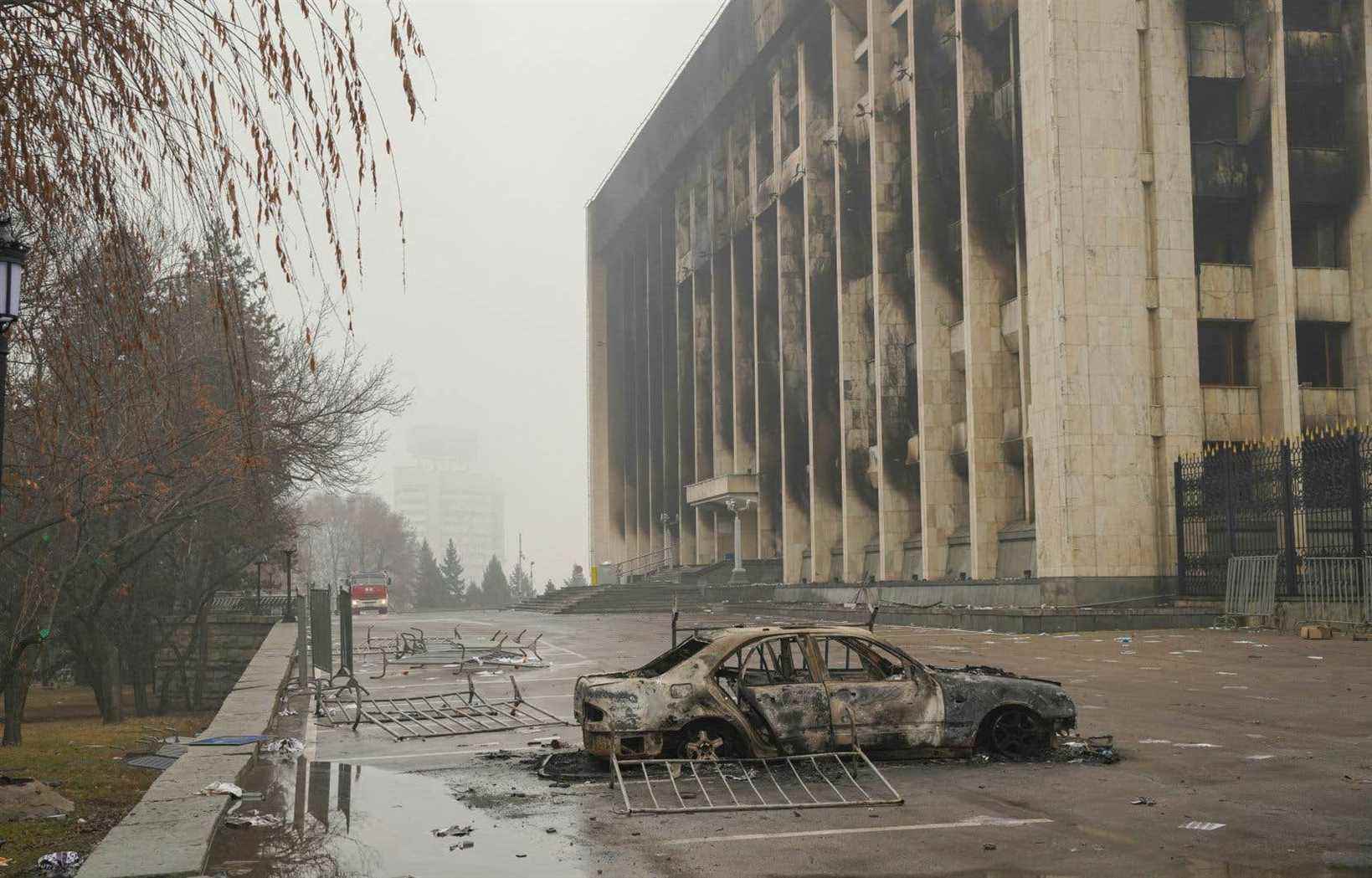Riots in Kazakhstan this week have left at least 164 people dead, according to a new sharply rising toll, as authorities in Central Asia’s largest country continue their relentless crackdown, with nearly 6,000 arrests.
In Almaty alone, the economic capital where the most violent riots took place, 103 people were killed, several media reported on Sunday, citing the Ministry of Health.
This balance sheet, which could not be independently verified, is on the rise. Authorities had so far reported 26 protesters and 16 members of the security forces killed and more than 2,000 injured.
The presidency announced Sunday that 5,800 people had been arrested and 125 investigations opened in the wake of these unprecedented riots since the independence, in 1989, of this country of 19 million inhabitants rich in hydrocarbons.
“The situation is stabilized in all regions of the country”, even if the security forces are still carrying out “cleaning” operations, declared the presidency after a crisis meeting with the head of state, Kassym-Jomart Tokayev.
The protest began in the provinces last Sunday after the increase in gas prices, before reaching major cities, including Almaty, where the police fired live ammunition at demonstrators storming official buildings.
According to the Kazakh Interior Ministry, the material damage caused by the violence was initially estimated at around 175 million euros.
More than 100 businesses and banks were looted and more than 400 vehicles destroyed, according to the same source.
Kazakhstan announced on Saturday the arrest of the former director of intelligence services, Karim Massimov, the first major figure arrested, on suspicion of “high treason”.
Refusing any dialogue with the demonstrators, President Tokayev had authorized his forces on Friday to “shoot to kill”.
Shy reopening
A sign of a timid return to normal, supermarkets reopened their doors on Sunday in Almaty, while the population is worried about shortages, Agence France-Presse noted.
Long queues of vehicles have formed in particular in recent days in front of gas stations.
However, a sign of the tension that still reigns, in Almaty, police officers fired shots in the air several times on Saturday to prevent residents from approaching the city’s central square.
Almaty also still bore the scars of violence, with building facades blackened by flames and scorched car wrecks littering the streets.
In addition to the rise in the cost of living, the figure of ex-President Nursultan Nazarbayev, who reigned with an iron fist over Kazakhstan from 1989 to 2019, crystallized the anger of the demonstrators.
His spokesperson, Aïdos Oukibaï, once again denied Sunday that Mr. Nazarbayev had left the country, assuring that he supported Mr. Tokayev.
Against the backdrop of rumors of a power struggle, he also said that Nazarbayev had ceded the leadership of the National Security Council on his own initiative to Mr. Tokayev, who had abruptly announced this week that he was taking the reins.
“Pain” of the Pope
The situation in Kazakhstan is followed with concern abroad, Pope Francis thus expressing Sunday his “pain” and calling for “dialogue” to find peace.
This crisis has also given rise to tensions between Russia and the United States, in a context of growing tensions between these two powers.
Moscow has deployed troops to the Central Asian country as part of a multinational collective security treaty organization (CSTO) contingent, at Tokayev’s call.
The United States said it would be “very difficult” for Kazakhstan to get the Russian military to leave, a criticism Moscow called “crass on Saturday”.
While American and Russian representatives are due to meet from Sunday evening in Geneva to talk about Ukraine and Europe, Moscow has ruled out any discussion with Washington on Kazakhstan.
“This question does not concern them at all,” swept the Russian Deputy Foreign Minister Sergei Riabkov on Sunday.
